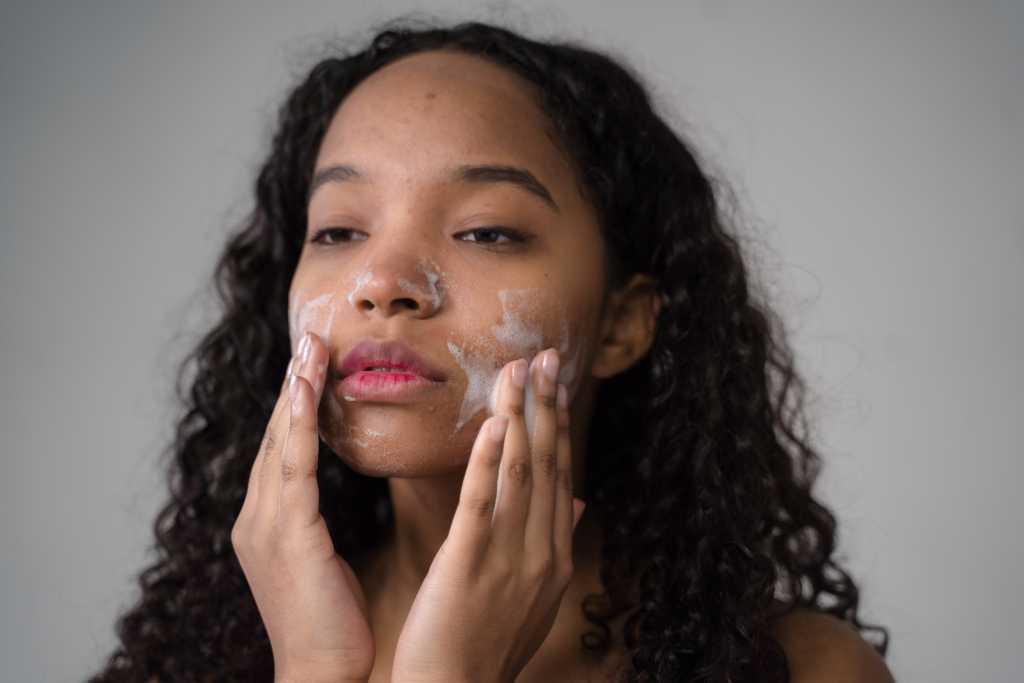In the myriad of different opinions and recommendations, we’re going back to basics. Understanding the purpose of cleansers and the various types that exist is the first step in choosing the right ones for your skin. For skin care products, just like most things, having the correct information is always better than jumping on the bandwagon, so in the end, there would be no regrets.
Good cleansers are the best foundation for a great skincare routine. As a skincare newbie, I heard the word “cleanse” so often that I knew it was one of the most integral steps in my routine, but I wasn’t about to add yet another step to the skin routine. Soap was fine, right? I just needed to get my face clean. But I couldn’t be more wrong.
Be it a 10-step routine or 3, cleansing is the first and most essential step in any skincare routine.
Cleansers are the unsung heroes of our skincare routines, diligently working to rid our skin of the day’s accumulation of dirt, makeup, and impurities.
You expose your face to many elements throughout the day, including bacteria, pollutants, viruses, dirt, and dead skin cells. This accumulation can lead to clogged pores, breakouts, and a lacklustre complexion. By efficiently eliminating daily impurities, cleansers protect your skin from potential damage and create a clean slate. Cleansing enhances your skin’s ability to absorb moisture effectively while helping it maintain the proper hydration level.

Their primary purpose is to cleanse the canvas of our face, preparing it for the nourishing and protective steps that follow to achieve clean, radiant, and healthy-looking skin. Okikiola, a skincare expert popularly known as the Skin Priest and founder of the aesthetic clinic skinfinityEC, couldn’t agree more. “A good cleanser doesn’t strip the skin of its natural protective lipids.”, she adds.
Know your cleanser
The beauty market offers diverse options for cleansers, each tailored to specific skin types and concerns.
- Foaming cleansers – These start as gel or cream and become foamy lather. They provide a deep, refreshing cleanse, especially after layers of makeup, making them suitable for normal and combination-type skin.
- Gel cleansers – These have a clear gel-like look and feel. They offer a deep and gentle cleansing experience, making them suitable for oily and acne-prone skin.
- Cream cleansers – These are water-based cleansers with a creamy consistency. They are prized for their nourishing properties, ideal for dry or sensitive skin needing extra hydration.
- Oil-based cleansers- These are made entirely of oils that excel in dissolving makeup and sunscreen, leaving the skin clean and hydrated.
- Micellar water – This contains purified water, moisturisers and mild surfactants. It is alcohol-free and can be used for all skin types. Micellar water is a favourite among those seeking convenience, efficiently removing impurities without rinsing. You can use it alone or as a double cleanser which means following the use of micellar water, you use a foamy or creamy cleanser.
In addition to these cleanser types, skincare experts have recognised the importance of addressing specific concerns, leading to the formulation of cleansers designed to combat acne or target hyperpigmentation. These specialised cleansers offer a proactive approach to skincare, allowing individuals to tailor their cleansing routines to their unique needs and preferences.
Choosing the right cleanser for you

Choosing the right cleanser is crucial in crafting an effective skincare routine. Here’s a guide to help you make the perfect selection:
- Know Your Skin Type: The first step in selecting the ideal cleanser is understanding your skin type. Whether you have oily, dry, combination, or sensitive skin, there’s a cleanser designed to cater to your specific needs.
“Oilier skin types tend to choose foaming/gel-based cleansers because they contain more surfactants which can cut through the pile of sebum accumulated on the skin surface through the day.”
Okikiola notes that drier and more sensitive skin types favour creamy, non-foaming cleansers because they are more gentle on the skin and less stripping.
- Read Those Labels: Take a moment to scrutinise the ingredient list. Look out for harsh chemicals like sulphates, which can strip your skin of natural oils and lead to dryness and irritation. Opt for cleansers free from fragrances, as these can also be a common source of skin sensitivity.
Cleansing with soaps leaves a drying effect which is terrible for the health of your skin. Okikiola points out that demonising ingredients isn’t the way to go. No singular ingredient is bad. When it comes to skincare, dosage dictates the poison.
- Go For Nourishing Ingredients: A great cleanser not only cleans but also pampers your skin. It’s like treating your skin to a spa day right there in your bathroom within minutes. Look out for ingredients like hyaluronic acid, which hydrates and plumps the skin, glycerin for moisturising benefits, aloe vera for soothing properties, and antioxidants to protect your skin from environmental damage.
By keeping these considerations in mind, you will choose a cleanser that not only effectively cleanses but also enhances your skin’s overall health and appearance.
“A good cleanser shouldn’t leave your skin feeling squeaky clean, dry and tight.”
How to use cleansers properly
While cleansing is essential, overdoing it can compromise your skin’s delicate balance. Safeguarding the skin’s natural moisture barrier during the cleansing process using cleansers is necessary. Cleansing every morning and night is the best for maximum benefits.
For a long time, I thought the skin needed to be squeaky clean after cleansing, Isn’t that the point? I was wrong. Okikiola warns that you need a new cleanser anytime you feel squeaky, clean and tight after cleansing.
- To cleanse your skin correctly, wet your face with lukewarm water. Apply a small amount of your chosen cleanser to your fingertips or a cotton pad and gently massage it into your skin using upward, circular motions. Ensure your hands are clean before touching your face.
- Pay special attention to areas prone to oiliness or where makeup accumulates. After a thorough massage, rinse your face with water, ensuring you remove all cleanser residue. Pat your skin dry with a clean, soft towel—avoid rubbing, as this can cause unnecessary irritation.
- Finish by applying your favourite skincare products, allowing them to work their magic on your freshly cleansed canvas.
Remember, the key is to be gentle; harsh scrubbing or over-cleansing can strip your skin of its natural oils and disrupt its balance.
In the pursuit of clear, radiant, and healthy skin, your journey begins with a thoughtful choice of cleansers and a commitment to mindful cleansing practices.


